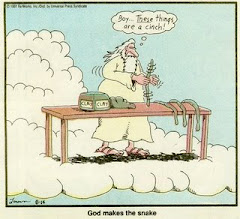From the website:
"The BODY WORLDS exhibitions are first-of-their-kind exhibitions through which visitors learn about anatomy, physiology, and health by viewing real human bodies, using an extraordinary process called Plastination a groundbreaking method for specimen preservation invented by Dr. von Hagens in 1977.
"Each exhibition features more than 200 real human specimens, including whole-body plastinates, individual organs, organ configurations and transparent body slices. The specimens on display stem from the body donation program that Gunther von Hagens established in 1983.The exhibitions also allow visitors to see and better understand the long-term impact of diseases, the effects of tobacco consumption and the mechanics of artificial supports such as knees and hips. To date, more than 25 million people around the world have viewed the BODY WORLDS exhibits."
It is apparent that this exhibit is not for everyone. As for myself, I love watching live operations, can tend to be a violence junkie, and don't get queazy very easily, so Body Worlds should be right up my alley.
Or will it?
There is something bugging me about this, and I believe C.S. Lewis puts it best in Abolition of Man:
"...a similar price is exacted for our analytical knowledge and manipulative power, even if we have ceased to count it. We do not look at trees either as Dryads or as beautiful objects while we cut them into beams: the first man who did so may have felt the price keenly, and the bleeding trees in Virgil and Spenser may be far-off echoes of that primeval sense of impiety. The stars lost their divinity as astronomy developed, and the Dying God has no place in chemical agriculture. To many, no doubt, this process is simply the gradual discovery that the real world is different from what we expected, and the old opposition to Galileo or to `body-snatchers' is simply obscurantism. But that is not the whole story. It is not the greatest of modern scientists who feel most sure that the object, stripped of its qualitative properties and reduced to mere quantity, is wholly real. Little scientists, and little unscientific followers of science, may think so. The great minds know very well that the object, so treated, is an artificial abstraction, that something of its reality has been lost.
"From this point of view the conquest of Nature appears in a new light. We reduce things to mere Nature in order that we may `conquer' them. We are always conquering Nature, because `Nature' is the name for what we have, to some extent, conquered. The price of conquest is to treat a thing as mere Nature. Every conquest over Nature increases her domain. The stars do not become Nature till we can weigh and measure them: the soul does not become Nature till we can psychoanalyse her. The wresting of powers from Nature is also the surrendering of things to Nature. As long as this process stops short of the final stage we may well hold that the gain outweighs the loss. But as soon as we take the final step of reducing our own species to the level of mere Nature, the whole process is stultified, for this time the being who stood to gain and the being who has been sacrificed are one and the same. This is one of the many instances where to carry a principle to what seems its logical conclusion produces absurdity. It is like the famous Irishman who found that a certain kind of stove reduced his fuel bill by half and thence concluded that two stoves of the same kind would enable him to warm his house with no fuel at all. It is the magician's bargain: give up our soul, get power in return. But once our souls, that is, ourselves, have been given up, the power thus conferred will not belong to us. We shall in fact be the slaves and puppets of that to which we have given our souls. It is in Man's power to treat himself as a mere `natural object' and his own judgements of value as raw material for scientific manipulation to alter at will. The objection to his doing so does not lie in the fact that this point of view (like one's first day in a dissecting room) is painful and shocking till we grow used to it. The pain and the shock are at most a warning and a symptom. The real objection is that if man chooses to treat himself as raw material, raw material he will be: not raw material to be manipulated, as he fondly imagined, by himself, but by mere appetite, that is, mere Nature, in the person of his de-humanized Conditioners." (emphasis mine)
Before commenting, I would encourage you to read Lewis's lecture, The Abolition of Man (and for the adventurous, the previous two lectures: Men Without Chests and The Way) so you can get a better idea of his overall argument.
Don't get me wrong. This looks like a fascinating exhibit from which one can learn a lot. The donors gave consent, so that is not the issue either. IMO, the tie-in to Abolition of Man is whether charging people a fee to see human corpses and body parts on display is part of the process of humankind becoming raw material.






